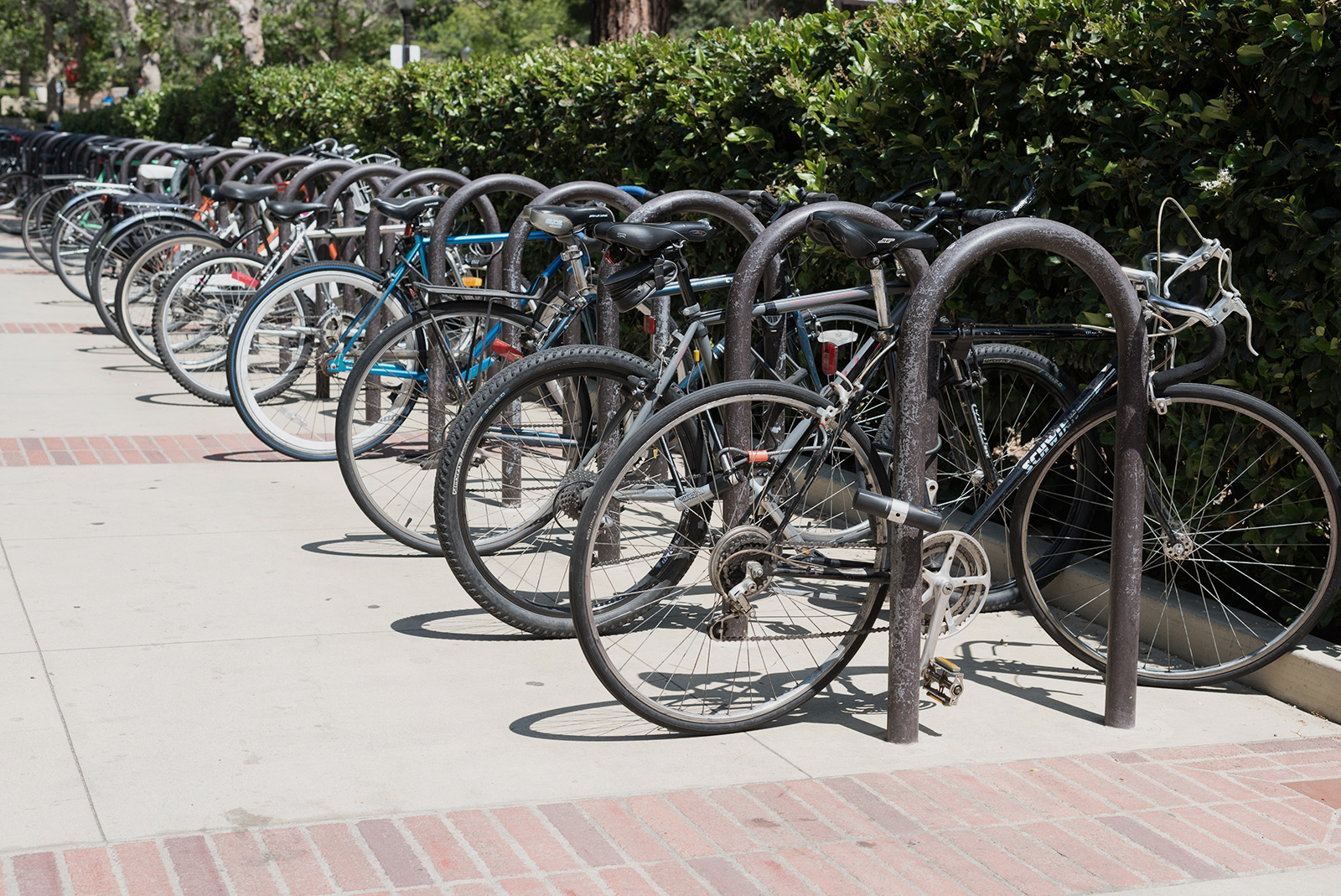UCLA achieves gold rating for bicycle accessibility following recent improvements

The League of American Bicyclists gave UCLA a gold rating for its bicycle-friendly policies and infrastructure. This rating is an improvement from the silver rating UCLA earned in 2015. UC Davis, UC Santa Barbara and UC Irvine all have a platinum rating. (Daily Bruin file photo)
By Martín Bilbao
Oct. 22, 2019 12:01 a.m.
UCLA improved from a silver to gold bicycle-friendly rating for its efforts to enable bicycling to and from campus, according to an independent evaluation released Thursday.
The League of American Bicyclists, a coalition of bicyclists advocating for the nationwide improvement of bicycling conditions, awarded UCLA the designation. The rating places UCLA in the top 15% of national rankings, according to a university press release.
Additionally, the rating makes UCLA the only university in Los Angeles County with a gold designation, UCLA Transportation Senior Associate Director David Karwaski said.
“If you walk around campus, you’ll see it’s a much more friendly bicycle environment than 15 years ago,” Karwaski said.
UCLA received a silver rating the last time it applied in 2015. Since then, UCLA has increased the visibility of bike lanes, built protected lanes, established the Bruin Bike Share program, introduced smart bike lockers and more, according to UCLA Transportation’s 2019 Active Transportation Plan.
UCLA was not the only University of California campus to improve in the ratings. UC Irvine and UC Santa Barbara improved from a gold rating in 2015 to join UC Davis with a platinum designation in 2019. Despite variable campus sizes, the improvements of other UC campuses is worthy of study, said UCLA Senior Transportation Planner Jimmy Tran.
“It allows us to see what other universities do,” Tran said. “UC Santa Barbara and UC Irvine were recently bumped to platinum – that’s a good thing because we can look at them.”
These designations are followed by a feedback report for each university. The 2015 report recommended more bicycle-friendly policies, public education, police liaisons and more.
Karwaski said UCLA already has a plan for how to improve bicycling conditions into the future but the feedback report it got last time was still helpful.
“It was useful guidance,” Karwaski said. “It let us know where our soft spots might be.”
Although UCLA has not received a new feedback report yet, it is still planning to continue improving bicycle networks, infrastructure and facilities, Karwaski said.
While UCLA is encouraging bicycle transportation, the percentage of student and employee commuters using bicycles is still in the single digits, according to statistics compiled in the ATP report. Only 4.2% of students commute on bicycles, while 33% walk, 26.2% use public transit, 23.5% drive alone, 7.4% carpool and 5.7% use other means.
For employees, only 2.1% commute on bicycles. Nearly half, at 48.9%, drive alone, 15.5% use public transit, 15.2% walk, 8.8% carpool, 4.1% vanpool and 4.7% use other means.
Karwaski said there has been a rise in bicyclists on campus, but electric scooters have impacted that progress.
“I prefer bicycles to e-scooters because bicycles involve actual active activity,” Karwaski said. “Getting active is better than e-scooters, but e-scooters are better than taking an Uber.”
Elwyn Leibold, a third-year anthropology student, said he uses a bicycle with a motor to commute to campus because the hills on and around campus can be challenging.
“I’ve seen no repeat faces on my bike (rides) to school,” Leibold said. “I did myself a favor and got a motor. That way I can track up these hills, but usually if I see someone on a regular bike going up these hills, I don’t see them the next day or the next week.”
Leibold added that there is a good variety of bike lanes to take to campus but wishes they were longer. He said some lanes end suddenly, forcing him to share the road with vehicles.
“There’s plenty of ways to go with bike lanes which is great,” Leibold said. “I wish they did a little bit more about the continuity of the bike routes. They tell you to use a bike route and share the road, but I don’t know if everyone can see or read the signs.”


